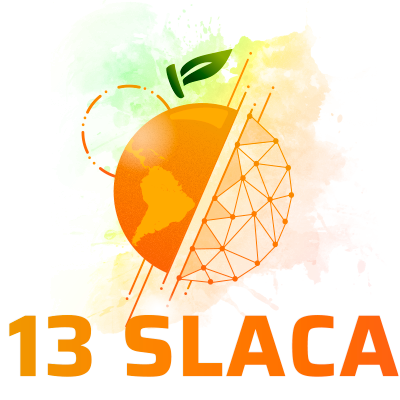Anais do Simpósio Latino Americano de Ciências de Alimentos
Anais do 13º Simpósio Latino Americano de Ciência de Alimentos
Carnaúba wax utilization in salt encapsulation – Ion release and bread application
Como citar esse trabalho?
Para citar este trabalho use um dos padrões abaixo:
Como citar esse trabalho?
Excessive sodium consumption is responsible for many diseases and high health money spending worldwide. The present work aimed to develop salt (NaCl) encapsulated in carnauba wax and subsequent application in bread, creating regions with inhomogeneous salt distribution, aiming at reducing sodium content in bread, maintaining its sensory properties. Thus, encapsulated salt (ES) was obtained blending coarse salt (between 0.840 and 1.680 mm diameter) and molten Carnauba wax in a rotatory mixer. To evaluate the salt coating efficiency was performed colorimetric analysis (CIE) and atomic absorption spectrophotometry (AOAC). There were 4 bread formulations, varying salt concentration: (F1) - Control - 2.0% unencapsulated salt (US); (F2) 2.0% ES; (F3) 1.5% ES; (F4) 1.0% ES of the total amount of flour. Dough rheology analyzes such as farinography and alveography (AOAC) were performed. Sensory analysis was conducted by 9-point structured hedonic scale (evaluating saltiness attribute) and performed by 120 untrained panelists. Colorimetric analysis has shown that the ES color is closer to the carnauba wax color than the US color, which shows the encapsulation process was successful. Atomic absorption spectrophotometry analysis identified that the Na+ ions release by ES solubilization in ultrapure water was incomplete, proving once again the Carnauba wax capacity to encapsulate particles. Alveography and farinography analyzes showed that the F3 (1.5% ES) was the closest to the control sample in rheological properties - the only parameter that differed significantly (P <0.05) was water absorption (lower using 1.5% ES). Sensory analysis proved there was a salt content reduction from 2.0% to 1.5% without harming to salty taste. The present work was successful in considerably reducing the bread sodium content by 25% without affecting its sensory and rheological properties, employing encapsulated salt in carnauba wax, which represents a potentially positive impact on human health.
- 1 Programa de Pós-Graduação em Ciência de Alimentos / Universidade Estadual de Maringá
- 2 Engenharia Química / Centro de Tecnologia / Universidade Estadual de Maringá
- 3 Universidade Estadual de Maringá
- 4 Instituto Agronômico do Paraná - IAPAR
- 5. Engenharia de processos e tecnologias emergentes (ET)
Discussões Científicas de Qualidade
Com ~200 mil publicações revisadas por pesquisadores do mundo todo, o Galoá impulsiona cientistas na descoberta de pesquisas de ponta por meio de nossa plataforma indexada.
Confira nossos produtos e como podemos ajudá-lo a dar mais alcance para sua pesquisa:
Como citar esse proceedings?
Esse proceedings é identificado por um DOI , para usar em citações ou referências bibliográficas. Atenção: este não é um DOI para o jornal e, como tal, não pode ser usado em Lattes para identificar um trabalho específico.
Verifique o link "Como citar" na página do trabalho, para ver como citar corretamente o artigo

